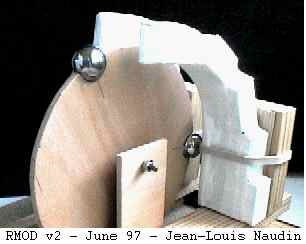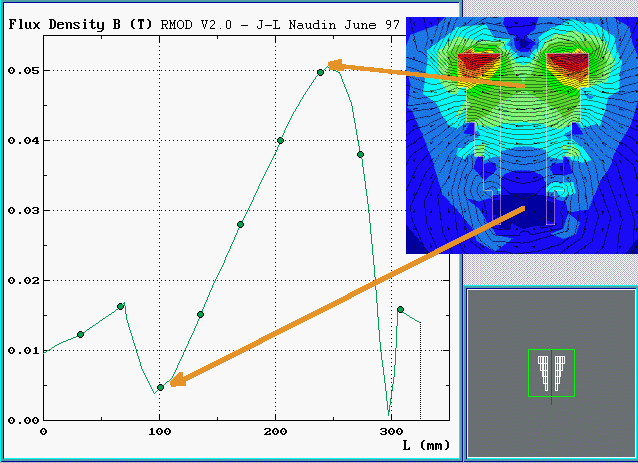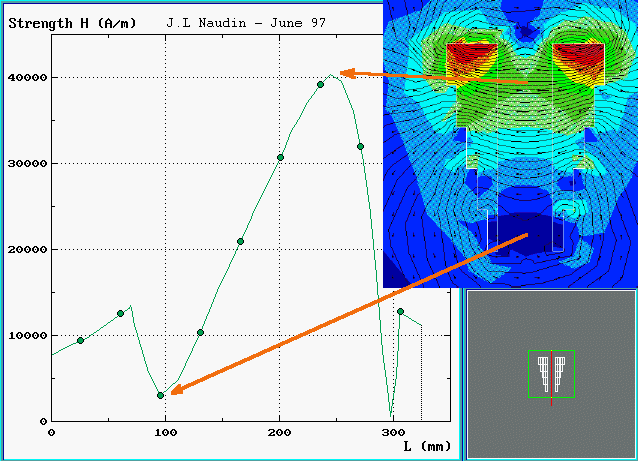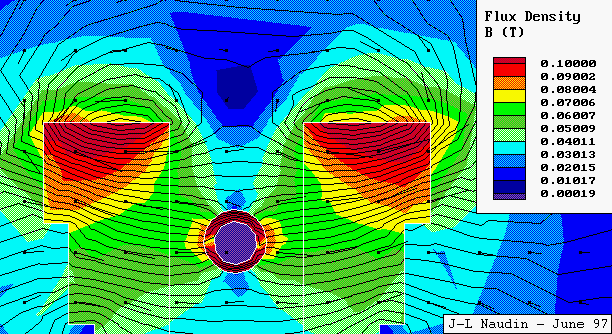

RMOD v 2.0 - Tests report
created on 21 Jun 1997 - JLN Labs - Jean-Louis Naudin - Last Update : 21 June 1997
This device is
under developpement and not fully tested
Preliminary tests results ( 06/20/97) :
In the RMOD the gravity as no effect in the regauging process.....
I have tried to use kinetic energy and the non-linearity of the ball's path for breaking the magnetic attraction.During my first series of tests the RMOD, once launched, rotates and STOPS after a few time, the regauging effect is not sufficient to maintain the rotation. It seems that the main problem comes from the material used for the rotating balls. As far as I am concerned, I think that I need to find the appropriated material or alloy which have a low magnetic saturation.
I shall try to explain what I think about this :
The principle of my RMOD V2.0 device is the use of the kinetic energy to regauge the system. But the kinetic energy at the exit must be greater than the magnetic back drag of the magnetic ramp.
During the first 2/3 of the path inside the magramp, the ball is accelerated and converts the magnetic energy into kinetic energy, in this first part the core of the ball is active and not magneticaly saturated.
When the ball reaches the saturation point, about at 20 mm BEFORE the higher flux density area, the material should be magneticaly saturated and the ball have the lowest magnetic permeability. At this point, all magnetic energy is converted into kinetic energy.

If the kinetic energy is sufficient to pass through the exit the regauging effect is possible and we should be able to build an open system for ZPE energy like a water wheel......
The use of K. Monel alloy ( specially Monel K500 ) seems good. This kind of ball is commercially available in ball bearings of Monel K500. The saturation of Monel alloy is reached at around 0.2 Teslas for 700000 A/m.

I am working today on magnetic simulation, I am studying most particularly a special design with a thin shell around the ball made with a high permeability alloy like supermalloy. The main goal of this study is to find the good setup which can create a magnetic shield just before the higher flux density area ( drop zone ) but without reducing significantly the magnetic to kinetic energy conversion during the first part (2/3) of the magnetic ramps.

The tests are not finished......stay tuned......more to come.....
RMOD V2.0 : Design and pictures